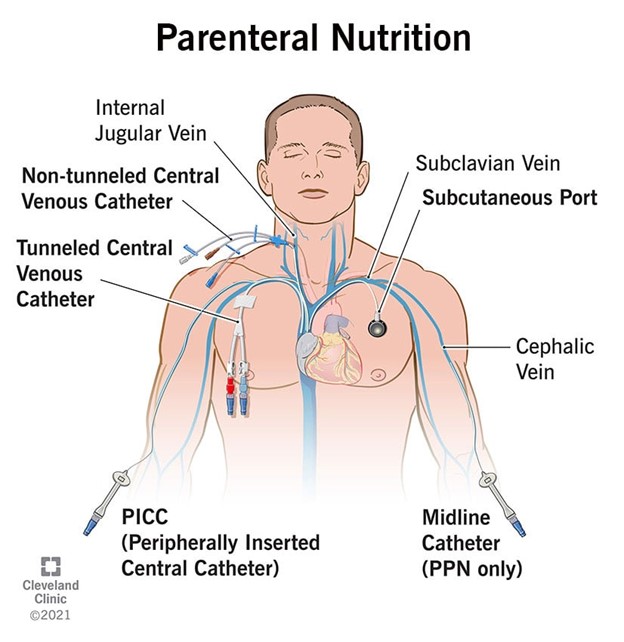While receiving report for a client with carcinoma in situ of the left breast, the practical nurse (PN) reviews a pending lab report and notices increased levels of Anti-Glycan Neu5Gc Antibodies (AGNA). Which changes should the PN anticipate to be included in the client's plan of care?
Initiation of changes in infection control measures
Increasing the client's dietary servings of fruits and vegetables
Limiting the client's fluid intake to avoid hemodilution
Avoiding the client's exposure to cold temperatures
The Correct Answer is A
- Anti-Glycan Neu5Gc Antibodies (AGNA) are antibodies that recognize a carbohydrate antigen called N- glycolylneuraminic acid (Neu5Gc), which is found in animal-derived foods and tissues, but not in humans. Humans can incorporate Neu5Gc from their diet into their own cells, which can trigger an immune response and the production of AGNA.
- AGNA have been associated with various inflammatory and autoimmune diseases, such as atherosclerosis, rheumatoid arthritis, Crohn's disease, and cancer. AGNA may also play a role in the rejection of bioprosthetic heart valves, which are made from animal tissues that contain Neu5Gc.
- A client with carcinoma in situ of the left breast is a client with a non-invasive form of breast cancer, where the abnormal cells are confined to the ducts or lobules of the breast. This type of cancer has a high chance of cure with surgery and/or radiation therapy.
- Increased levels of AGNA in a client with carcinoma in situ of the left breast may indicate that the client has an increased risk of inflammation and infection, as AGNA can activate the complement system and recruit inflammatory cells to the site of Neu5Gc expression. This may impair the healing process and increase the chances of complications after surgery or radiation therapy.
Therefore, the practical nurse (PN) should anticipate that the client's plan of care will include initiation of changes in infection control measures, such as prophylactic antibiotics, wound care, sterile dressing changes, and monitoring for signs and symptoms of infection (such as fever, redness, swelling, pain, or pus). These measures will help to prevent or treat any potential infection and promote wound healing.
Therefore, option A is the correct answer, while options B, C, and D are incorrect.
Option B is incorrect because increasing the client's dietary servings of fruits and vegetables may not have a significant impact on the levels of AGNA or Neu5Gc in the client's body.
Option C is incorrect because limiting the client's fluid intake to avoid hemodilution may not be necessary or beneficial for the client's condition.
Option D is incorrect because avoiding the client's exposure to cold temperatures may not be relevant or helpful for the client's condition.
Nursing Test Bank
Naxlex Comprehensive Predictor Exams
Related Questions
Correct Answer is D
Explanation
A is incorrect because IV tubing for total parenteral nutrition should be changed every 24 hours to prevent infection.
B is incorrect because abdominal distention is not an expected effect of total parenteral nutrition. It could indicate a complication such as fluid overload or bowel obstruction.
C is incorrect because gastric residual is not relevant for total parenteral nutrition, which bypasses the gastrointestinal tract.
D is correct because weight measurement is an important indicator of fluid balance and nutritional status for clients receiving total parenteral nutrition.

Correct Answer is D
Explanation
A. Incorrect. Aspirin can trigger asthma attacks in some children and should be avoided.
B. Incorrect. The peak expiratory flow meter should be used daily, not just when the child has symptoms, and the highest reading should be recorded, not the average.
C. Incorrect. Carpet can harbor dust mites, mold, and other allergens that can worsen asthma. It is better to have hardwood or tile floors and washable rugs.
D. Correct. Influenza immunization can prevent serious complications from respiratory infections in children with asthma.
Whether you are a student looking to ace your exams or a practicing nurse seeking to enhance your expertise , our nursing education contents will empower you with the confidence and competence to make a difference in the lives of patients and become a respected leader in the healthcare field.
Visit Naxlex, invest in your future and unlock endless possibilities with our unparalleled nursing education contents today
Report Wrong Answer on the Current Question
Do you disagree with the answer? If yes, what is your expected answer? Explain.
Kindly be descriptive with the issue you are facing.
